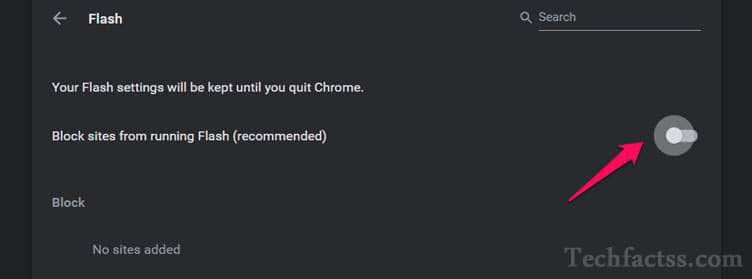
There is no longer an option to enable it for everything all the time. Now for the fun part! In order to run Flash, you have to enable it for specific sites only. You should never choose Allow sites to run Flash unless you have a really valid reason like using Chrome in a virtual machine or something. Obviously, if you want to completely block Flash in Chrome, select Block sites from running Flash. Make sure that the Ask first before allowing sites to run Flash (recommended) box is selected. In the popup dialog, scroll down until you see the Flash heading.

Scroll down some more and then click on Content Settings under Privacy. Scroll down to the bottom of the page and click on Show Advanced Settings. Now click on the Chrome menu button at the top right and click on Settings. Under Adobe Flash Player, click the Check for update button. Open another tab and type in chrome://components. Make sure that Prefer HTML over Flash and Run all Flash content when Flash setting is set to “allow” are set to Default. Open a new tab and type in chrome://flags. There are a couple of places where you can do this. Check Chrome Flash Settingsįirst, let’s check the Flash settings in Chrome. In this article, I’ll explain how to get Flash to work when you need it and how to keep it disabled otherwise. Now it seems they only want you to enable it for the specific sites where it is needed.

This is terribly unintuitive and really confused me because I was used to going there to enable or disable Flash as needed.


 0 kommentar(er)
0 kommentar(er)
